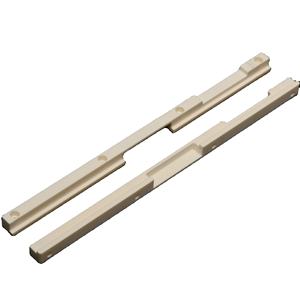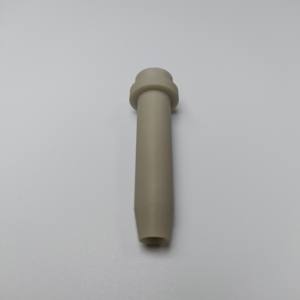Discover Premium Ceramic Products | Durability & Elegance United | Advanced Ceramics
PRODUCT PARAMETERS
Description
Overview of aluminum nitride ceramics
Aluminum Nitride Ceramic is an advanced ceramic material with aluminum nitride as the main component. It has been widely used in electronics, optics, and mechanics due to its unique properties.
Features of aluminum nitride ceramics
High thermal conductivity: Aluminum nitride ceramics have relatively high thermal conductivity, usually between 170-260 W/m·K, which makes it an excellent heat dissipation material. It is especially suitable for electronic devices that require efficient heat dissipation, such as substrate materials for power semiconductor devices.
Good electrical insulation: Despite its high thermal conductivity, aluminum nitride ceramics are excellent insulators of electricity, which can effectively prevent current leakage and ensure the safe operation of electronic components.
Low dielectric constant and dielectric loss: These characteristics make aluminum nitride ceramics very suitable for use in high-frequency circuits because it can reduce energy loss during signal transmission.
High temperature resistance: Aluminum nitride ceramics can maintain structural stability and strength at extremely high temperatures. Its melting point is about 2800°C, so it is suitable for applications in high temperature environments.
Low thermal expansion coefficient: Compared with semiconductor materials such as silicon, aluminum nitride has a lower thermal expansion coefficient, which means it has better dimensional stability when the temperature changes, which helps improve packaging reliability.
Corrosion resistance: Aluminum nitride ceramics have good chemical stability to most molten metals and are not easily oxidized or corroded, allowing them to perform well in harsh environments.
High mechanical strength: Although not as hard as some other types of ceramic materials, aluminum nitride ceramics still provide enough mechanical strength to allow them to be used in many structural applications.
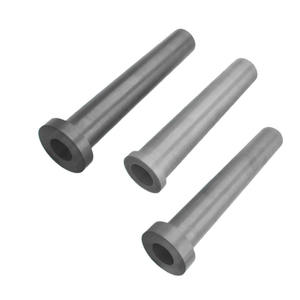
(Alumina Nitride ALN Metallized Thin Film PCB Ceramic Substrate)
Specifications of Alumina Nitride ALN Metallized Thin Film PCB Ceramic Substrate
Alumina Nitride (ALN) Metallized Thin Film PCB Ceramic Substratum supplies high thermal conductivity for effective heat management in digital devices. This product conducts heat much better than aluminum oxide, making it perfect for high-power applications where warmth dissipation matters. It makes certain secure efficiency by minimizing thermal tension on parts. The substrate offers excellent electric insulation, protecting against existing leakage or brief circuits in circuits.
The metallized layer on the ALN surface uses thin movie deposition methods like sputtering or evaporation. Steels like gold, silver, or copper create this layer, producing reputable conductive courses. The metallization guarantees solid adhesion to the ceramic base, improving solderability for affixing parts. This process supports exact circuit patterns, satisfying needs for miniaturized electronics.
ALN ceramic substratums show high mechanical strength and resilience. They resist fracturing under mechanical or thermal tension, ideal for extreme environments. The product keeps security throughout a wide temperature array, from -50 ° C to 350 ° C. It deals with rapid temperature level adjustments without degrading, crucial for commercial or aerospace applications.
The thermal growth coefficient of ALN carefully matches silicon. This compatibility minimizes stress and anxiety when bonding with semiconductor chips, boosting device dependability. The substrate lessens bending or delamination throughout operation, extending product lifespan.
Surface surface alternatives consist of polished or roughed up appearances. Refined surfaces suit fine-pitch circuits, assisting photolithography processes. Roughened surface areas improve attachment for thick-film metallization. Custom thickness and monotony tolerances are available, dealing with certain style demands. Limited resistances make certain uniformity in high-frequency or high-speed applications.
Applications cover power electronic devices, RF components, LED product packaging, vehicle systems, and aerospace tech. The product sustains high-frequency signal transmission with low loss, crucial for interaction devices. Its resistance to chemical corrosion and radiation suits clinical or protection devices.
ALN substratums can be found in typical dimensions or custom-made dimensions. They incorporate with existing PCB manufacturing processes, decreasing production costs. The material complies with RoHS and REACH criteria, ensuring environmental safety. Efficiency data and technological assistance help engineers enhance layouts for specific usage situations.
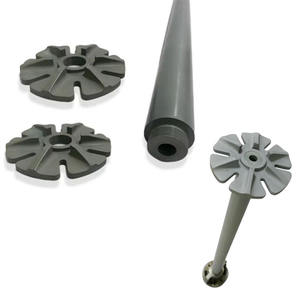
(Alumina Nitride ALN Metallized Thin Film PCB Ceramic Substrate)
Applications of Alumina Nitride ALN Metallized Thin Film PCB Ceramic Substrate
Alumina Nitride (ALN) Metallized Thin Film PCB Ceramic Substrates are extensively made use of in advanced electronic devices. These substrates integrate high thermal conductivity with solid electric insulation. They work well in settings needing reliable warm dissipation. ALN substrates handle severe temperature levels. They withstand thermal shock much better than many materials. This makes them ideal for high-power applications.
Power electronics count on ALN metallized substratums. Gadgets like inverters and converters generate significant heat. ALN substratums move warm away rapidly. This protects against overheating. It makes certain stable efficiency. The metallized layer enables accurate circuit patterning. This boosts signal stability in high-frequency systems.
RF and microwave systems use these substratums. ALN’s reduced dielectric loss keeps signal high quality. It sustains high-frequency procedures without interference. Telecom devices take advantage of this. Radar systems and satellite interactions likewise make use of ALN substratums.
LED lighting innovation depends on ALN substratums. High-power LEDs create substantial warm. Effective thermal monitoring prolongs LED life expectancy. ALN substratums enable compact layouts. They keep brightness and shade uniformity in time.
Automotive electronics embrace ALN substratums for dependability. Electric vehicles require robust thermal solutions. ALN takes care of high temperatures in power components. It makes sure sturdiness in severe conditions. Sensors and control devices make use of these substrates for accuracy.
Aerospace applications call for materials that carry out under anxiety. ALN substrates hold up against temperature level fluctuations. They withstand mechanical stress. Avionics systems use them for trustworthy operation. Satellite parts take advantage of their lightweight yet durable nature.
Medical gadgets make use of ALN substrates for accuracy. Imaging systems and surgical tools need secure electric efficiency. ALN’s biocompatibility matches implantable tools. It makes certain security and lasting functionality.
Commercial tools integrates ALN substrates for high-power processes. Laser diodes and semiconductor manufacturing rely upon their thermal homes. ALN minimizes downtime by avoiding heat-related failures.
Renewable energy systems like solar inverters make use of ALN substrates. They handle heat in high-efficiency converters. This enhances energy output. ALN sustains lasting innovation by improving element reliability.
These substratums are essential in semiconductor product packaging. They secure delicate chips from thermal damages. ALN’s electrical insulation stops brief circuits. It makes sure chips run at peak effectiveness.
ALN metallized thin movie PCB ceramic substratums meet needs across markets. Their one-of-a-kind homes address obstacles in heat monitoring, signal honesty, and longevity.
Company Introduction
Advanced Ceramics founded on October 17, 2014, is a high-tech enterprise committed to the research and development, production, processing, sales and technical services of ceramic relative materials and products.. Since its establishment in 2014, the company has been committed to providing customers with the best products and services, and has become a leader in the industry through continuous technological innovation and strict quality management.
Our products includes but not limited to Silicon carbide ceramic products, Boron Carbide Ceramic Products, Boron Nitride Ceramic Products, Silicon Carbide Ceramic Products, Silicon Nitride Ceramic Products, Zirconium Dioxide Ceramic Products, Quartz Products, etc. Please feel free to contact us.(nanotrun@yahoo.com)

Payment Methods
T/T, Western Union, Paypal, Credit Card etc.
Shipment Methods
By air, by sea, by express, as customers request.

5 FAQs of Alumina Nitride ALN Metallized Thin Film PCB Ceramic Substrate
1. What is Alumina Nitride ALN Metallized Thin Film PCB Ceramic Substrate?
Alumina Nitride ALN Metallized Thin Film PCB Ceramic Substrate is a specialized material for electronic circuits. It combines aluminum nitride ceramic with a thin metal layer. The ceramic offers high thermal conductivity and electrical insulation. The metal layer allows components to attach securely. This material suits high-power devices needing heat management.
2. Why pick ALN over other ceramics like alumina?
ALN conducts heat better than alumina. Alumina has lower thermal conductivity. ALN matches silicon’s thermal expansion, reducing stress in chips. This makes ALN ideal for high-density electronics. It handles extreme temperatures better than many materials.
3. Where is ALN Metallized Thin Film PCB used?
Common uses include power electronics, LED lighting, and RF modules. Aerospace systems use it for reliability in harsh conditions. Automotive applications include electric vehicle battery controls. Telecom devices rely on its signal stability. Medical equipment benefits from its precision.
4. How is the metal layer added to ALN substrates?
Thin-film methods like sputtering or plating apply the metal layer. Metals like gold, silver, or copper create circuits. The process ensures tight bonding between ceramic and metal. This prevents peeling under heat or vibration. Precision techniques guarantee uniform thickness.
5. How should ALN substrates be stored and handled?
Keep substrates dry to avoid moisture damage. Store in clean, temperature-controlled areas. Use gloves to prevent oil from skin affecting surfaces. Avoid bending or dropping to prevent cracks. Seal unused substrates in anti-static packaging.
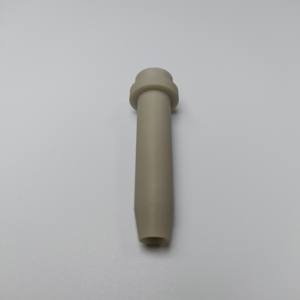
(Alumina Nitride ALN Metallized Thin Film PCB Ceramic Substrate)
REQUEST A QUOTE
RELATED PRODUCTS
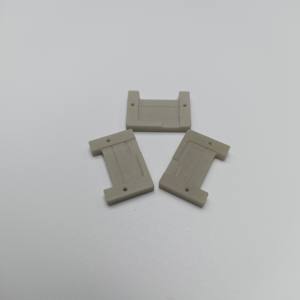
High Quality Thermal Conductive Sheet AlN Aluminum Nitride Ceramic Substrate
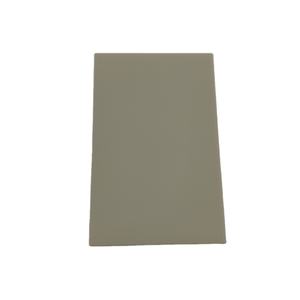
Custom Aluminum Nitride AlN Machined Ceramic Plate
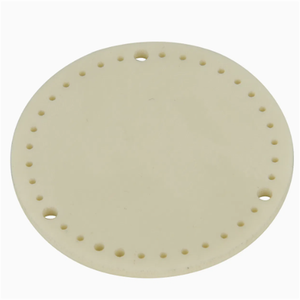
Advanced Ceramic ALN Aluminum Nitride Ceramic Plate With Hole
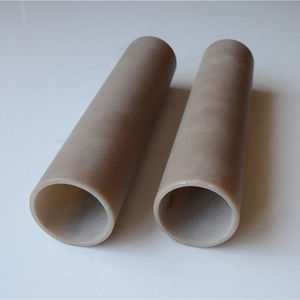
Spherical AlN Ceramic Microsphere Aluminum Nitride Powder AlN Granules
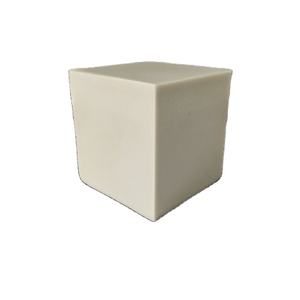
High Heat Conductivity AlN Aluminum Nitride Ceramic Sheet
